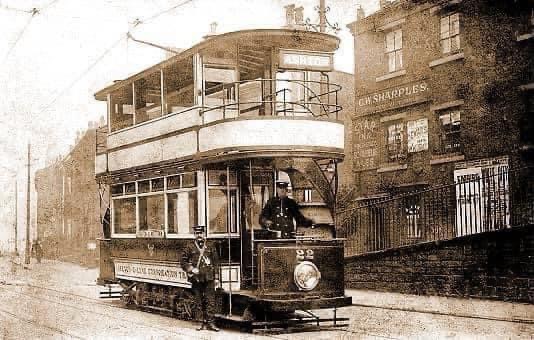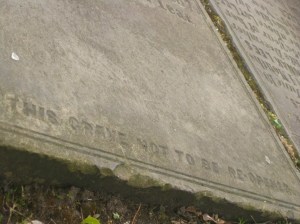Rock Cottage was built prior to 1750 and as such is one of the earliest homes in Stalybridge. Detailed below is a list of the owners from 1750 to 2000.

Pre 1750
Most of the Land in this area was originally owned by the Earl of Stamford however in this case the land appears to have been owned by the Dukinfields.
1750 – Samuel Dukinfield
The earliest reference I can find for the house was 1750 when Samuel Dukinfield sold Rock Cottage and Rock House (then described as “…. a messe & tenement & several closes of land) to Joseph Hall of Cocker Hill in the parish of Ashton Under Lyne. The land was described as part of the Cocker Hill Estate.
1750 – 1764 Joseph Hall
Joseph Hall bought the property in November 1750. He was described as a Clothier. He died in 1764.
In his will Joseph Hall left the cottage to his sons. George Hall Clothier, Joseph Hall Publican and Neddy Shelmerdine Clothier. Why one of Joseph Hall’s son was a Shelmerdine rather than a Hall I don’t know (yet).
1764 – 1804 George Hall, Clothier, Joseph Hall, Publican and Neddy Shelmerdine, Clothier
From the book Stalybridge Pubs 1750-1990 Rob Magee I know that Joseph Hall (publican) was the innkeeper of the Pack Horse Inn, Cocker Hill from 1808 – 1828
Joseph Hall gets a further mention in this blog as it appears could have been a victim of the infamous Body snatchers. I’ve never seen a ghost; I’m not sure if I believe in them anyway; but if I did want to frighten anyone at Halloween I could dim the lights and talk of the body snatchers taking Joseph Hall off to the surgeons in Manchester………
In Bygone Stalybridge by Samuel Hill there is a reference to a Joseph Hall; born 1787 died 1864. Could he have been a relation to the other Joseph Halls? It describes this Joseph Hall as being connected with the Staly Hunt and describes his burial in the Cocker Hill church yard “attended by upwards of a hundred devout followers of the chase, many of them dressed in their well-worn livery, and attended by their faithful hounds”. Apparently the sight provided material for a Lancashire sketch entitled “The Huntsman’s Funeral” by Ben Brierey. Joseph Hall’s gravestone is still in the Churchyard.

Joseph Hall, Huntsman
1804 – John Hall?
This is where things get confusing…….from an Abstract of title of Thomas Walker 1873 it appears that the property was sold at auction to John Hall for £359. It then looks like John Hall planned to transfer the sale onward to Samuel Gartside (Publican) for £20, however although the £20 was paid it appears that sale did not go through and the property reverted back to previous owners.
Indenture of lease and release dated 15th/16th February 1811 confirms that the sale to Samuel Gartside did not go through & states that the property reverted back to the trustees. (George Hall, Joseph Hall, & Neddy Shelmerdine).
Next it states that James Hall (cotton manufacturer) was a part owner too and that “he produced documents to show that he was the owner of the largest and most profitable lot”.
The indenture then states that the three properties were to be sold to Rev John Cape Atty – Clerk in holy orders for £355.10/.
Rev Cape Atty also paid Samuel Gartside (publican) & Edward Gartside (cotton manufacturer) 5/- a piece to confirm that they had no claim on the land or 3 houses.
1811 – 1822 Rev. John Cape-Atty
Rev Cape Atty was curate of Old St Georges From April 1807 to his death in 1822.
Rev Cape Atty talks of the house in the “Articles of Enquiry” (a questionnaire, completed by Atty, for the Bishop of Chester). In the questionnaire he states “I reside in a house close to the Chapel, which House I bought at some inconvenience, by the Desire of my Congregation, …………………….It is a substantial Stone Building, with a stable and Cow-house on the premises. Also a garden.” I think that the stable and cow house he refers to is actually Rock Cottage’s kitchen. The reference to “some inconvenience” over the purchase probably relates to the uncertainty regarding the previous ownership.
Rev. Atty’s will dated 2/3/1818 left Rock Cottage to his sister Sarah, wife of John walker, in trust for her sole use and further trust that it should pass through her will to her kids and grandkids.
John Walker (coal merchant) (Sarah’s son & his nephew) and Ralph Hall (cotton spinner) (Sarah’s son in law) were appointed executors.
Rev John Cape Atty dies and is buried in the Cocker Hill graveyard 20 May 1822.
1822 – 1835 Sarah Walker
Sarah had 3 kids John Walker, Thomas Walker and Elizabeth Hall (wife of Ralph Hall.) Sarah Walker died and was buried on Cocker Hill 22 October 1835. It looks as though she did not make a will leaving the Cocker Hill Houses to her kids – it is not clear what happened next.
I think it was shared between her three children: John Walker (coal merchant), Thomas Walker (coal merchant) and Elizabeth Hall.
1835 – 1853 John Walker (coal merchant), Thomas Walker (coal merchant) and Elizabeth Hall.
Then it looks as though Ralph & Elizabeth Hall sold their share to Edward Appleton. The new owners were presumably John Walker, Thomas Walker and Edward Appleton
John Walker died 9/8/1853 & his will dated 6 May 1951 left an annuity of £500 to Barbara Walker his wife and left his share of the Houses to his brother Thomas Walker (Sarah’s other son possibly) along with other property.
Barbara Walker died 4/5/1872 without children.(buried in Maryport)
1853 – 1873 Thomas Walker – from Maryport in the County of Cumberland
Thomas Walker, Sold both properties at Auction in 1881, by Messrs Henry Heap & Son at Commercial Inn, Stalybridge
1873 – 1881 Thomas Alexander Skirvin Saxon – Manager of A Cotton Mill
Thomas Alexander Skirvin Saxon bought the cottage at Auction on 19/11/1873 at The Commercial Inn. He paid for & took ownership on 31 December 1873.
Thomas was married to Harriet Ann Saxon
Thomas is apparently pictured 3rd from the left on the picture below; doesn’t he look smart in his top hat!

Chapel Street Sunday School, built in 1815. From left to right; Allen Wilde, Robert Platt Whitworth, Thomas A. S. Saxon and James Moore (From: ‘United Methodist Centenary Souvenir’, 1915
Thomas Alexander Skirvin Saxon died 24/1/1881
1881 – 1888 Harriet Ann Saxon
Harriet Ann Saxon died 1 February 1888 and left the property to Robert Whitworth Saxon.
1888 – 1929 Robert Whitworth Saxon (Mechanic) & (Mrs) Mary Saxon
Robert Whitworth Saxon died 2 September 1929.
His will was dated 17/March 1914. He appointed his wife Mary as Executor.
1929 – 1936 Mary Saxon
Mary Saxon died 27/02/1936 and left the property to her daughter Harriet Shaw
1936 – 1960 (Mrs) Harriet Shaw
Harriet Shaw died 14/08/1960.
1960 – 1961 Executors of the Estate of Harriet Shaw
1961 – 1982 Noel Backhouse
(Green Grocer) & (Mrs) Elizabeth Backhouse
Noel Backhouse died 14/01/1982
1982 – 1989 (Mrs) Elizabeth Backhouse
Elizabeth Backhouse Sold the property in 1989 and moved into Blandford Court just behind Rock Cottage.

Rock Cottage, July 2009



























